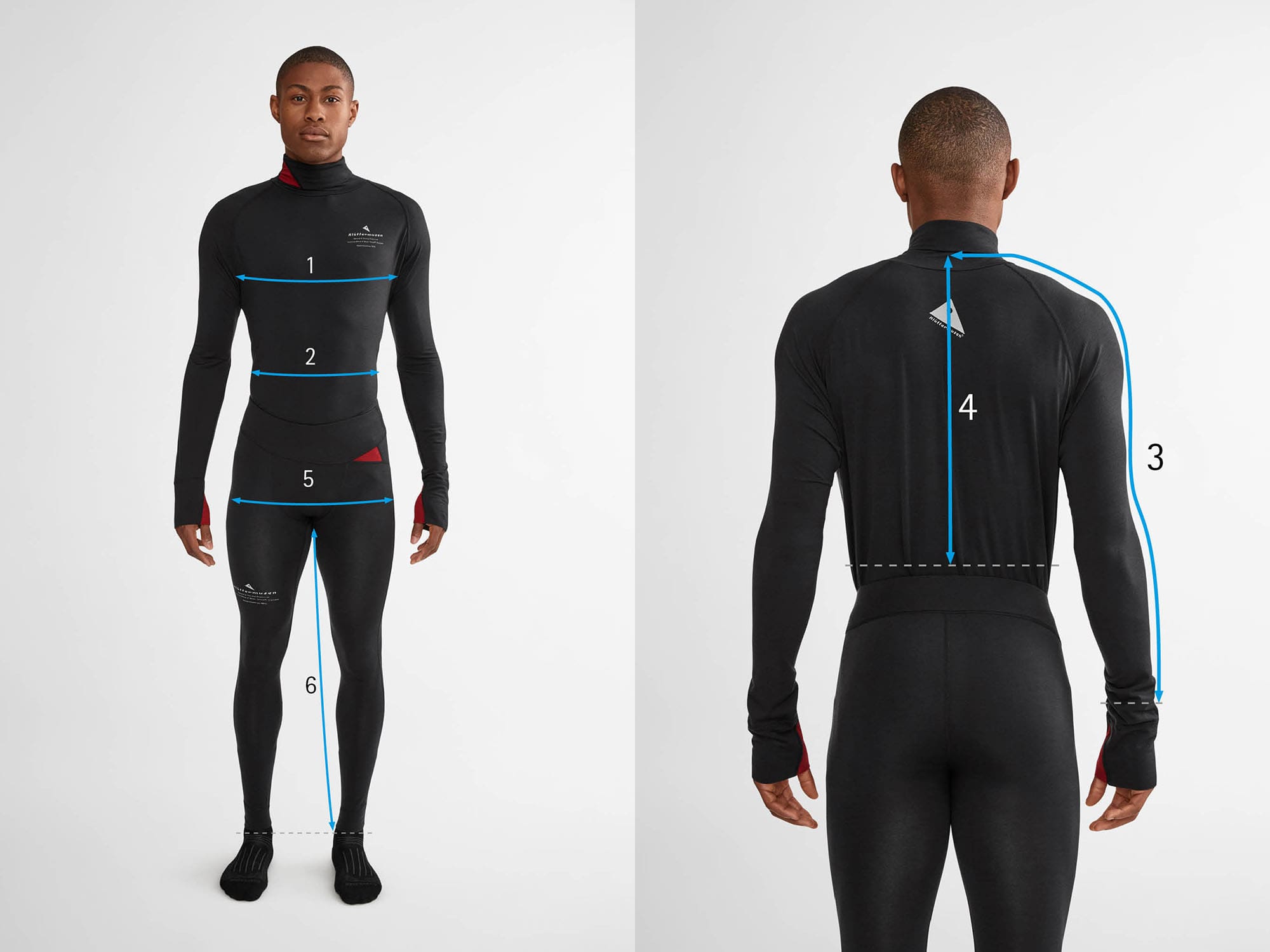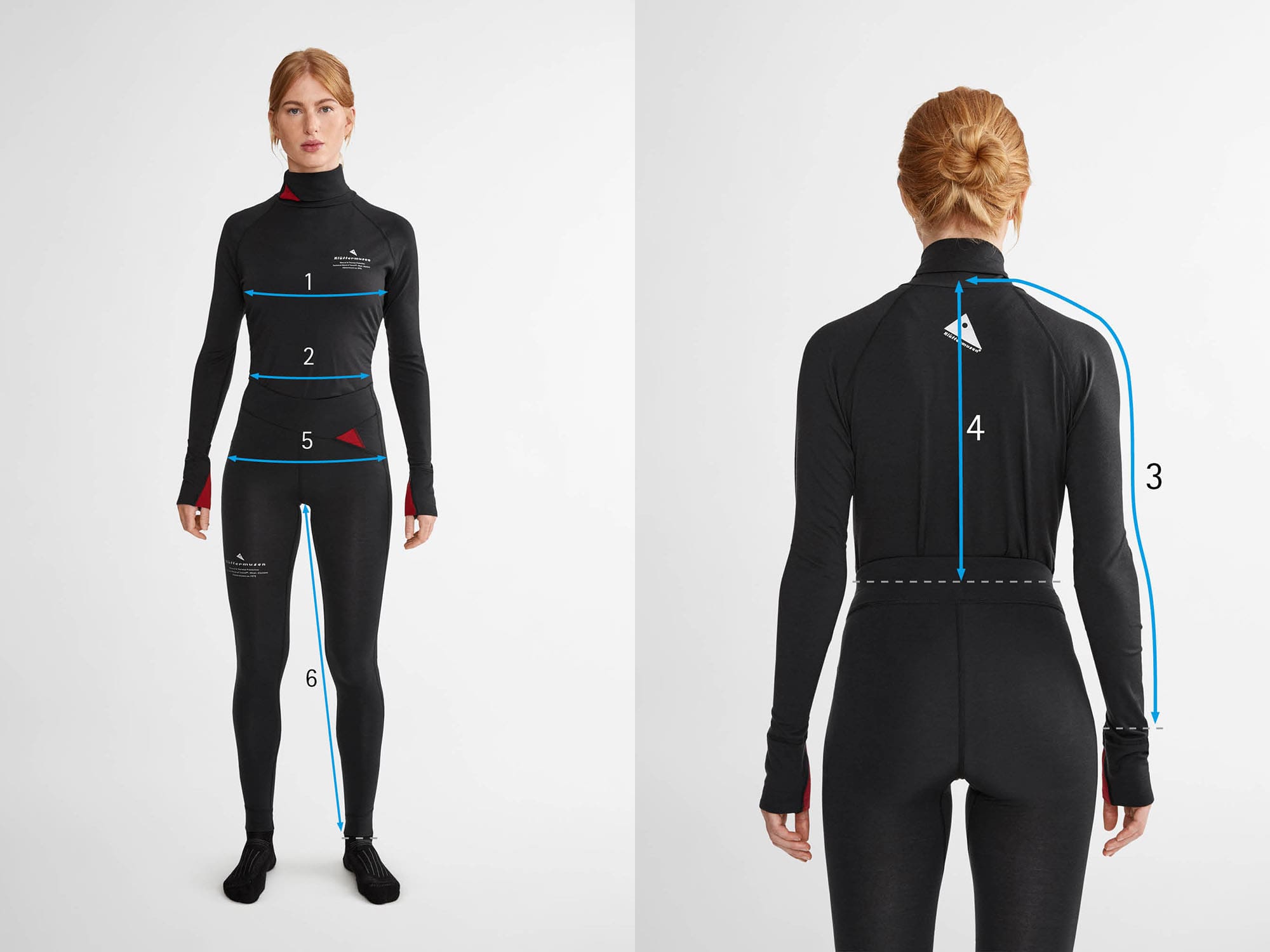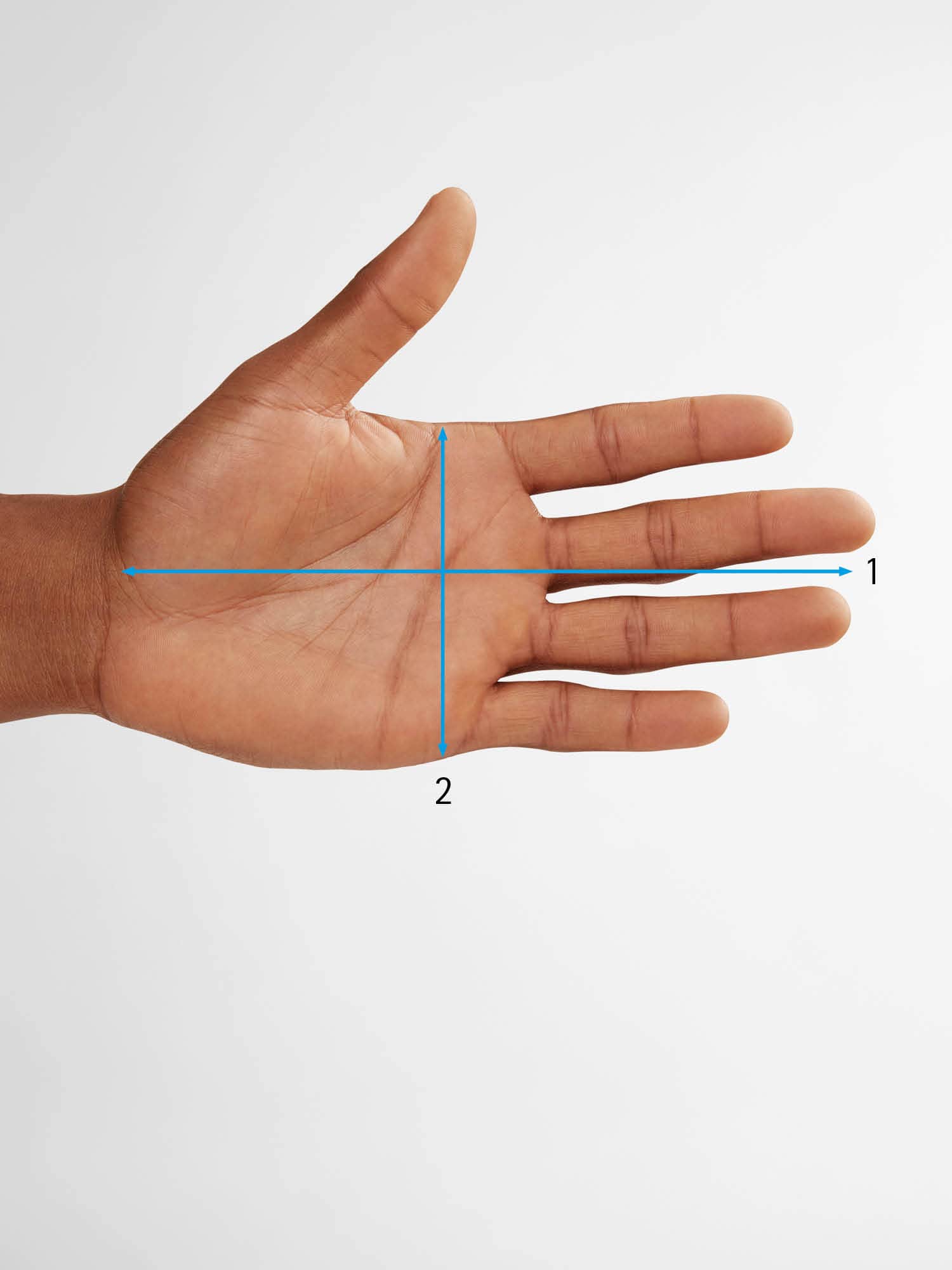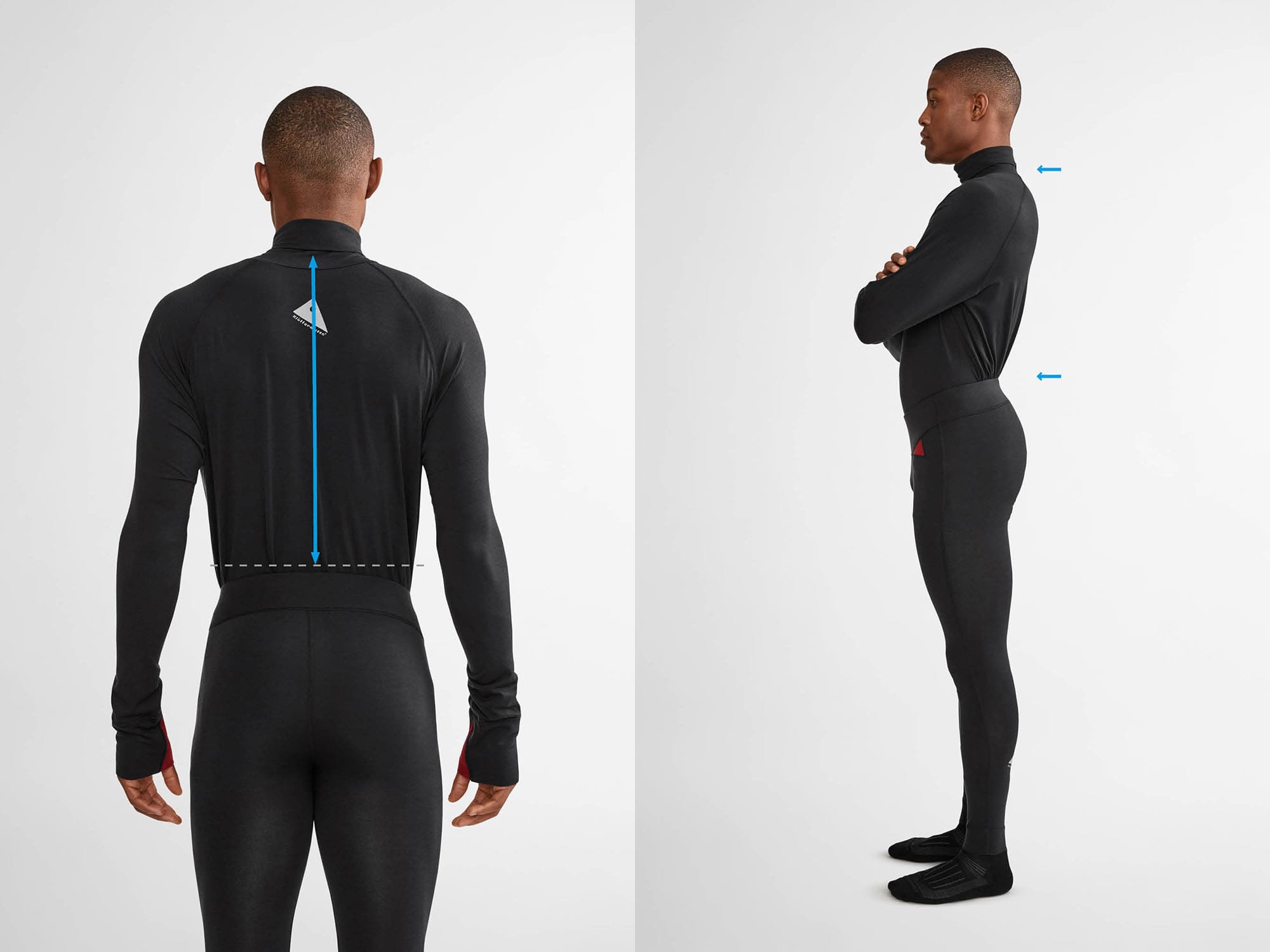Customer Service
My Account
- Sign in / Register
- Overview
- Profile
- Orders
- Returns
- Address Book
- Wishlist
- Recently Viewed
Having the right sized equipment will give you a much more enjoyable and secure outdoor experience. All Klättermusen products have been carefully designed with fits intended for specific activities in mind and considers comfort, layering and performance of the fabrics. Here you will find a general size guide, and individual size guides can be found on each product.
Our fits are general and correlates to the intended use it was designed for. The fit of a size medium can therefore differ between products. The right size for you is a combination of the product’s design, your intended usage, and your individual preference. It can seem like a lot, but there are a few steps that will help you choose the right size.
We have three different types of fits for different intended usage to help you navigate and the fits will give you a benchmark of how the products are designed. A medium sized jacket with a regular fit is slimmer in design than a medium sized jacket with a relaxed fit. If your intention is to use it for the activity it was designed for, then go with your normal size. If your personal preference is a more relaxed fit, then size up.
The key thing when choosing your size is comfort. Questions to ask yourself is: ”Does it allow for freedom of movement?” and “Can I wear enough layering underneath?”.
Example: Nal, Ansur, Sif
Made to be worn close-to-body with a tight base layer underneath. Designed not to restrict freedom of movement, or gear needed for active pursuits. Mainly used for Alpine apparel or fast paced activities.
Regular fit prioritizes versatility. Regular fit active layers are roomy enough for one underneath thin base- or mid layer, and slim enough in combination with backpacks or harnesses.
Example: Fafne, Groa, Torre
A tight close-to-body fitting layer. Used as a base layer, or as a stand-alone layer for fast paced activities when minimal equipment is needed.
Regular fit is designed with a looser fit than a slender. Provides air between you and the garment for comfort and ventilation.
Designed for a loose fit. Relaxed enough for wearing a slender base layer underneath, or wear alone for a comfortable airy layer.
Example: Hödur, Huge, Balder
Close-to-body fit with room enough for a thin base layer underneath. Designed not to restrict freedom of movement, or gear needed for active pursuits. Pairs well with a slender fit for shell layer.
Regular fit is designed to prioritizes versatility. Spacious enough for underneath base layers, and slim enough in combination with backpacks or harnesses.
Example: Allgrön 2.0, Brage 2.0, Skirner
Close-to-body fit with room for one slender base layer underneath. Designed not to restrict freedom of movement, or gear needed for active pursuits, whilst protect against water and abrasion in colder conditions. Mainly used for Alpine technical apparel or fast paced activities.
Regular fit prioritizes versatility and full freedom of movement. Regular fit for shell layers are roomy enough for an underneath base layer and a mid layer, and slim enough in combination with backpacks or harnesses. Common fit for both trekking, alpine and in transition styles.
Designed to fit base layer, mid layer, and light insulation underneath. The fit provides the possibility of a barrier of air underneath for warmth, and is ideal for temporary protection against rain or snow. Made to be worn above your primary gear.
Example: Alv 2.0, Atle 3.0, Bifrost
Close-to-body fit with room for one slender base layer underneath. Designed not to restrict freedom of movement, or gear needed for active pursuits. Here you will find HCR 3. Mainly used for Alpine technical apparel or fast paced activities.
Regular fit prioritizes versatility. Regular fit for insulation layers is roomy enough for an underneath base layer and a mid layer, and slender enough in combination with backpacks or harnesses. Common fit for both trekking, alpine and in transition styles. Here you will find HCR 3-7.
Designed to fit base layer, mid layer, and light insulation underneath. The fit provides the possibility of a barrier of air underneath for warmth, and is ideal for temporary protection against the cold in moments of stillness during an activity. Here you will find HCR 7-9.
Example: Alfhild, Gere 3.0, Vanadis 3.0
Close-to-body fit and designed not to restrict freedom of movement, with light protection against wind and abrasion. Mainly used for fast paced activities.
Regular fit prioritizes versatility and full freedom of movement, and is designed to fit a tight base layer underneath. Does not hinder use of your gear such as harness. Common fit for both trekking, alpine and in transition styles.
Designed to fit a base layer underneath, whilst still have a barrier of air between you and the outer fabric, for warmth or coolness. A more relaxed fit provides room for high movability and comfort.
Example: Andvare, Brage 2.0, Asynja
Designed with a close-to-body fit worn with a base layer underneath, whilst not restricting freedom of movement. Offers protection against water and abrasion in cold conditions. Mainly used for Alpine technical apparel or fast paced activities
Regular fit prioritizes versatility, full freedom of movement, and is designed to fit a base layer and mid layer underneath. Does not hinder use of your gear such as harness. Common fit for both trekking, alpine and in transition styles.
Designed to fit many layers underneath to suit the activity, whilst still have a barrier of air for warmth. Mostly used for expedition styles.
Example: Ansur, Laufey, Vanadis 3.0
Close-to-body fit and designed not to restrict freedom of movement, with light protection against wind and abrasion. Mainly used for fast paced activities.
Regular fit prioritizes versatility and full freedom of movement. Common fit for both trekking, fast paced, and in transition styles.
Designed to have a barrier of air for coolness in warm conditions. A more relaxed fit provides room for high movability and comfort. Used for longer shorts.




| XS | S | M | L | XL | XXL | |
|---|---|---|---|---|---|---|
| Body Height | 171 cm | 175 cm | 179 cm | 183 cm | 187 cm | 191 cm |
| 1. Chest | 83-88 cm | 89-94 cm | 95-100 cm | 101-106 cm | 107-112 cm | 113-118 cm |
| 2. Waist | 71-76 cm | 77-82 cm | 83-88 cm | 89-94 cm | 95-100 cm | 101-106 cm |
| 3. Sleeve Length | 79,5 cm | 82 cm | 84,5 cm | 87 cm | 89,5 cm | 92 cm |
| 4. Back Length | 43,5 cm | 44,5 cm | 45,5 cm | 46,5 cm | 47,5 cm | 48,5 cm |
| 5. Seat | 87-92 cm | 93-98 cm | 99-104 cm | 105-110 cm | 111-116 cm | 117-122 cm |
| 6. Inseam | 79 cm | 81 cm | 83 cm | 85 cm | 87 cm | 88 cm |
| XXS | XS | S | M | L | XL | |
|---|---|---|---|---|---|---|
| Body Height | 162-166 cm | 164-168 cm | 166-170 cm | 168-172 cm | 170-174 cm | 172-176 cm |
| 1. Chest | 71-76 cm | 77-82 cm | 83-88 cm | 89-94 cm | 95-100 cm | 101-106 cm |
| 2. Waist | 55-60 cm | 61-66 cm | 67-72 cm | 73-78 cm | 79-84 cm | 85-91 cm |
| 3. Sleeve Length | 71,5 cm | 74 cm | 76,5 cm | 79 cm | 81,5 cm | 84 cm |
| 4. Back Length | 38,5 cm | 39,5 cm | 40,5 cm | 41,5 cm | 42,5 cm | 43,5 cm |
| 5. Seat | 79-84 cm | 85-90 cm | 91-96 cm | 97-102 cm | 103-108 cm | 109-114 cm |
| 6. Inseam | 77 cm | 78 cm | 80 cm | 82 cm | 84 cm | 86 cm |
| XXS | XS | S | M | L | XL | |
|---|---|---|---|---|---|---|
| European (EU) | 32 | 34 | 36 | 38 | 40 | 42 |
| French (FR) | 34 | 36 | 38 | 40 | 42 | 44 |
| Italian (IT) | 38 | 40 | 42 | 44 | 46 | 48 |
| USA | 0 | 2 | 4 | 6 | 8 | 10 |
| UK | 6 | 8 | 10 | 12 | 14 | 16 |